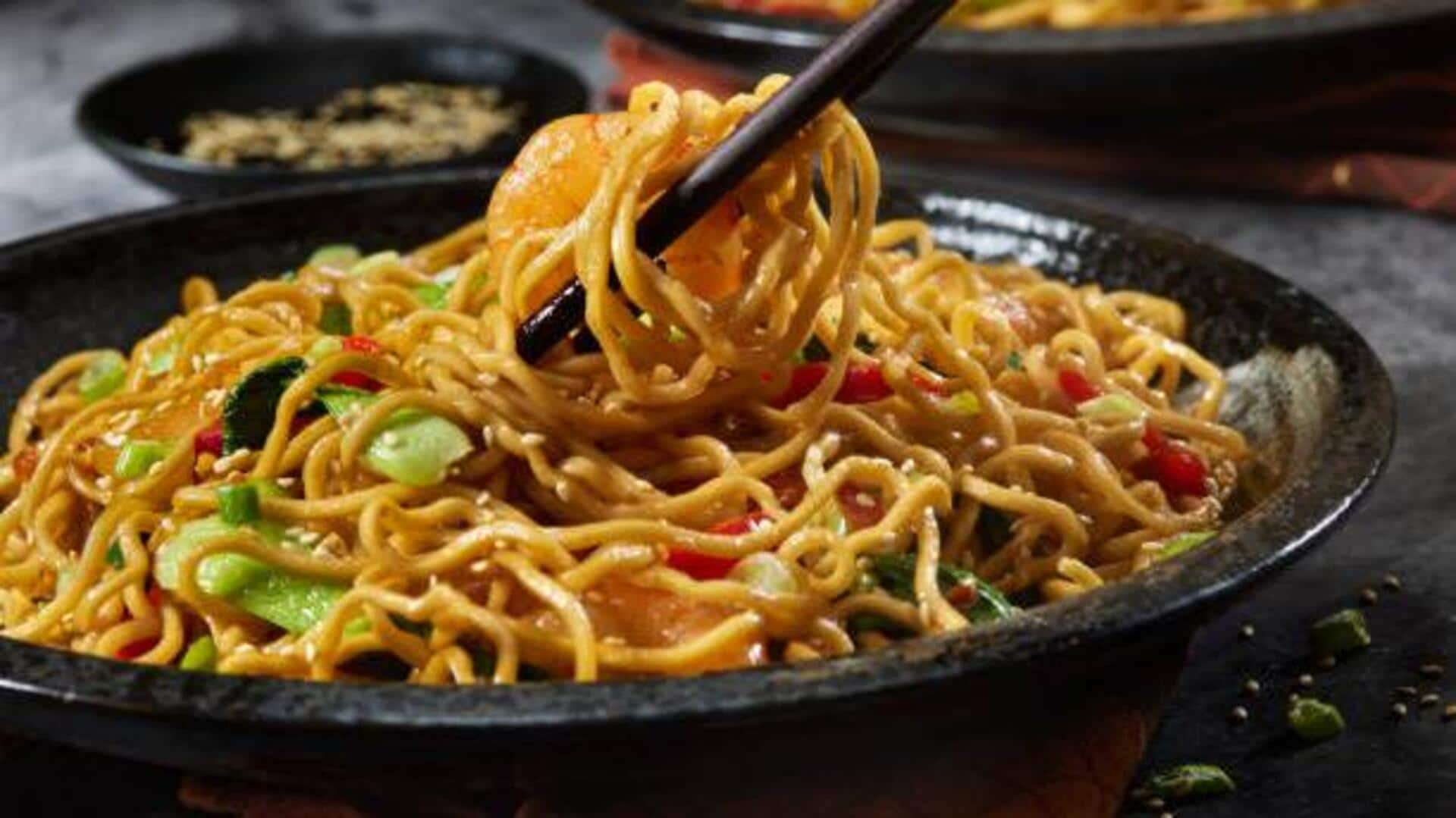
How to make authentic Asian noodles at home
What's the story
Making authentic Asian noodles at home can be a rewarding culinary experience. With the right ingredients and techniques, you can create dishes that rival those from your favorite restaurant. This guide provides essential tips and tricks to help you master the art of noodle-making. From selecting the best ingredients to perfecting cooking methods, these insights will enhance your skills and confidence in the kitchen.
Flour selection
Choosing the right flour
The key to perfect noodles is selecting the right flour. For traditional Asian noodles, use high-protein wheat flour as it gives the dough elasticity. If you're making rice noodles, go for rice flour as it gives a delicate texture. Experiment with different blends to find what suits your taste best.
Dough tips
Mastering dough consistency
Achieving the right dough consistency is crucial for making authentic noodles. The dough should be firm but pliable enough to roll out easily. Add water gradually while kneading until you reach this texture. Letting the dough rest for thirty minutes before rolling out helps develop gluten, making it easier to shape.
Cooking methods
Cooking techniques
Cooking techniques vary depending on the type of noodle you're making. For wheat noodles, boiling them in salted water until al dente is key. Rice noodles require soaking in hot water instead of boiling, to prevent them from becoming too soft or mushy.
Flavor pairing
Pairing with sauces and vegetables
Pairing your homemade noodles with appropriate sauces and vegetables elevates their flavor profile significantly. Soy sauce-based marinades work wonders with wheat-based pastas, while peanut sauce complements rice varieties beautifully. Adding fresh vegetables like bell peppers or bok choy not only enhances taste but also adds nutritional value, making every bite a delightful experience.
Storage tips
Storing homemade noodles
Proper storage ensures your homemade noodles maintain their quality over time. If not used immediately after preparation, refrigerate them in an airtight container for up to three days or freeze them for longer preservation (up to three months). When ready to use frozen ones again, thaw overnight in the fridge before cooking as usual.